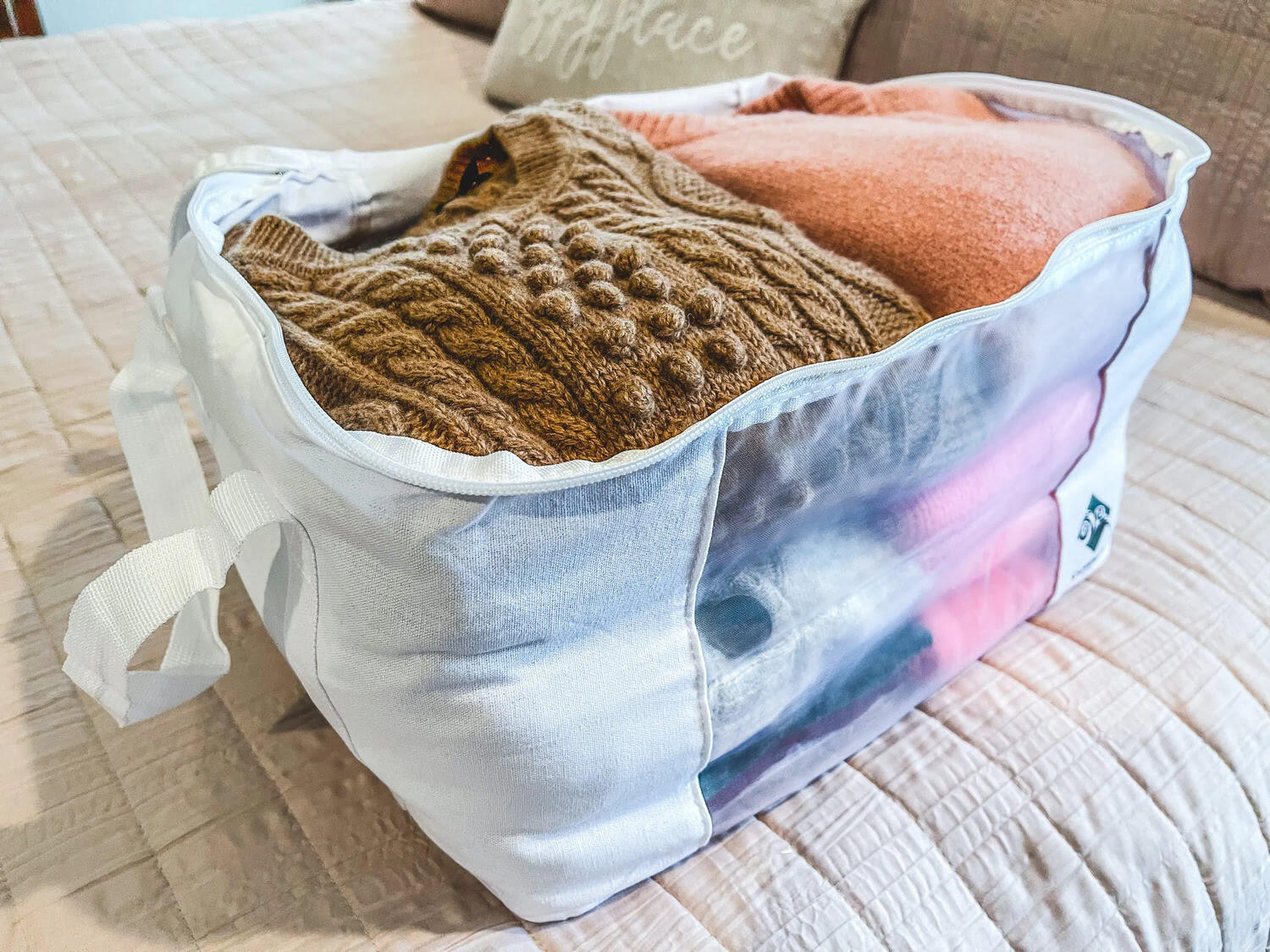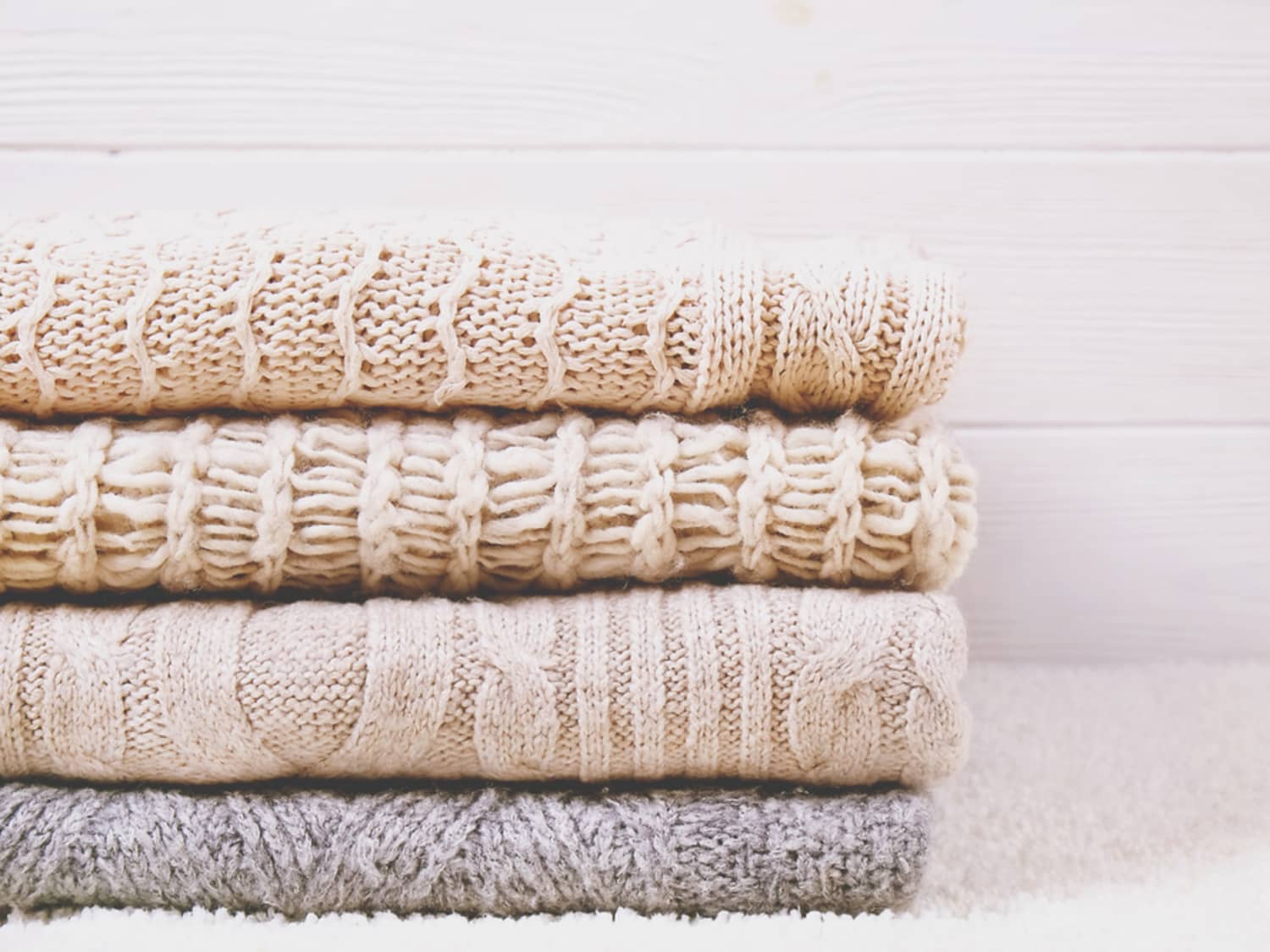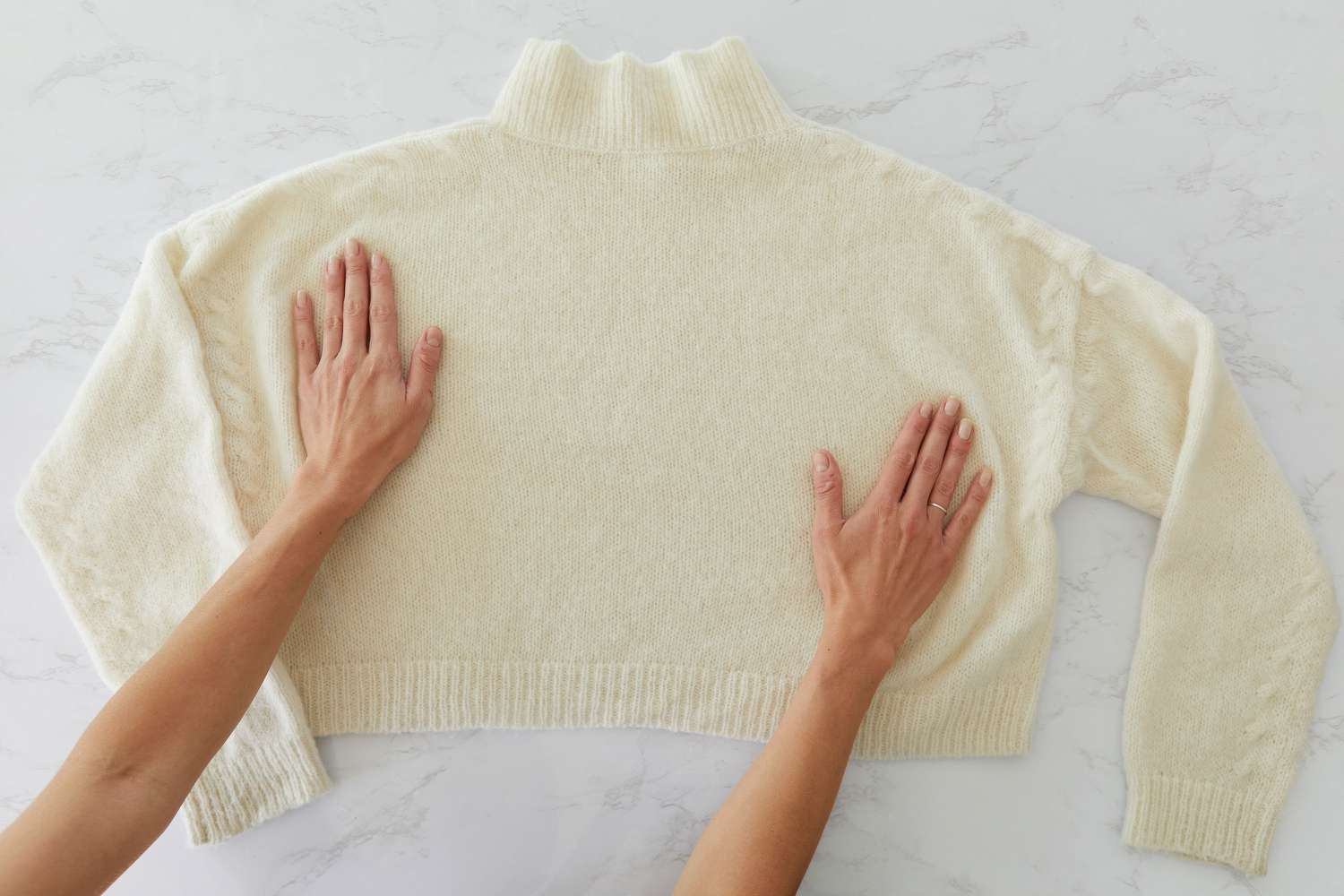

Articles
How To Store Cashmere Sweaters From Moths
Modified: January 20, 2024
Learn how to store your cashmere sweaters and protect them from moths with these helpful articles.
(Many of the links in this article redirect to a specific reviewed product. Your purchase of these products through affiliate links helps to generate commission for Storables.com, at no extra cost. Learn more)
Introduction
Cashmere sweaters are luxurious and prized possessions, known for their softness and warmth. However, these delicate garments are also vulnerable to damage by moths. Moths are tiny insects that can wreak havoc on your cashmere sweaters, leaving behind unsightly holes and ruining the fabric. To protect your investment and ensure the longevity of your cashmere sweaters, it is essential to store them properly and take preventive measures against moth infestations.
In this article, we will delve into the world of moths and their potential damage to cashmere sweaters. We will explore various strategies and techniques to prevent moth infestations in your wardrobe and discuss the importance of choosing the right storage method for your precious cashmere sweaters. Additionally, we will provide guidance on cleaning the sweaters before storage and using natural moth repellents for added protection. Finally, we will address the proper techniques for folding and storing cashmere sweaters and emphasize the importance of regular inspection and maintenance.
By following the tips and techniques outlined in this article, you will be able to keep your cashmere sweaters safe from moths and ensure that they remain in pristine condition for years to come.
Key Takeaways:
- Protect your cashmere sweaters from moth damage by implementing preventive measures such as regular cleaning, airtight storage, and natural repellents like cedar and lavender.
- Safeguard the quality of your cashmere sweaters by choosing the right storage method, cleaning them before storage, and using natural moth repellents to keep them in pristine condition for years to come.
Read more: How To Store Cashmere Sweaters
Understanding Moths and Their Damage to Cashmere Sweaters
Before we delve into preventive measures, it’s important to understand the threat posed by moths to cashmere sweaters. The two types of moths that commonly cause damage to textiles are clothes moths and carpet beetles. It’s the larvae of these insects that feed on the natural fibers of cashmere, leaving behind holes and irreparable damage.
Cashmere is particularly susceptible to moth damage due to its high protein content, making it an attractive food source for moth larvae. Adult moths are attracted to moisture, body oils, and food particles present on the garments, while the larvae directly target the fibers themselves.
The damage caused by moth larvae can be devastating to cashmere sweaters. The larvae create tunnels within the fabric, weakening the structure and ultimately leading to holes. These holes not only compromise the garment’s aesthetics and value but also shorten its lifespan.
It’s important to note that moths are not solely attracted to dirty or soiled garments. In fact, clean garments are also at risk because moths are drawn to the natural oils and proteins present in the fibers. Therefore, regular cleaning and proper storage are crucial to prevent moth infestations.
Signs of moth infestation include the presence of small holes in your cashmere sweaters, along with evidence of shedding fibers and larvae casings. It’s essential to be proactive in identifying and addressing these signs as early as possible to minimize damage and prevent further infestation.
Now that we have a better understanding of the threat posed by moths, let’s explore the preventive measures you can take to protect your cashmere sweaters from these destructive insects.
Preventing Moth Infestations in your Wardrobe
To safeguard your cashmere sweaters from moth infestations, it’s important to create an environment that is inhospitable to these pests. Here are some effective strategies:
- Regularly clean your wardrobe: Moths are attracted to dirt, sweat, and food particles that may be present on your garments. Regularly clean your wardrobe, vacuuming the floors and shelves to remove any debris or potential food sources.
- Store clean garments: Ensure that the cashmere sweaters and other garments you store are clean. Moths are less likely to be attracted to clean, odorless fibers.
- Avoid storing soiled or stained items: If a garment is stained or soiled, thoroughly clean it before storing it. Moths are particularly attracted to these items, as the stains may contain proteins and oils that attract them.
- Use airtight storage containers: Opt for airtight containers, such as plastic bins or vacuum-sealed bags, to store your cashmere sweaters. This prevents moths from infiltrating and laying eggs on your precious garments.
- Properly seal wardrobe cracks and crevices: Moths can enter your wardrobe through cracks and crevices. Seal any openings or gaps, ensuring that your wardrobe is airtight and secure.
- Consider cedar or lavender: Both cedar and lavender are natural moth repellents. Place cedar chips, cedar balls, or lavender sachets in your wardrobe or storage containers to deter moths.
- Avoid exposure to sunlight: While natural light is important for ventilation, excessive exposure to sunlight may fade the colors of your cashmere sweaters. Opt for a cool, dark storage area to protect your garments from both moths and sun damage.
- Rotate your wardrobe: Regularly rotate and wear your cashmere sweaters to prevent them from sitting in storage for extended periods. This ensures that moths do not have the chance to lay eggs and infest your garments.
- Monitor your wardrobe: Regularly inspect your wardrobe for signs of moth activity, such as larvae casings or small holes in your garments. Take immediate action if you spot any signs of infestation to prevent further damage.
By implementing these preventive measures, you can significantly reduce the risk of moth infestations in your wardrobe and protect your cashmere sweaters from damage.
Choosing the Right Storage Method for Cashmere Sweaters
Proper storage is essential to maintain the quality of your cashmere sweaters and protect them from moth damage. Here are some key considerations when selecting the right storage method:
- Airtight containers: Opt for airtight containers, such as plastic bins or vacuum-sealed bags, to store your cashmere sweaters. These containers prevent moths from accessing your garments and laying eggs on them.
- Absorbent materials: Place some absorbent materials, such as tissue paper or cedar chips, in the storage containers. These materials can help absorb moisture and prevent mildew growth, ensuring your cashmere sweaters stay fresh.
- Avoid plastic bags: Avoid storing your cashmere sweaters in plastic bags alone, as these can trap moisture and potentially damage the fibers. If you must use plastic bags, ensure they are breathable or include ventilation holes.
- Fold instead of hanging: Cashmere sweaters are best stored folded rather than hung. Hanging can stretch out the shoulders, causing them to lose their shape. Additionally, fold the sweaters along the natural creases to minimize the appearance of wrinkles.
- Separate delicate items: If you store multiple cashmere sweaters in the same container, separate them with tissue paper or cotton sheets. This will prevent friction and potential damage caused by garments rubbing against each other.
- Avoid mothballs: Mothballs, while effective at deterring moths, emit strong and unpleasant odors. Instead, opt for natural alternatives like cedar chips or lavender sachets to repel moths without compromising the scent of your garments.
- Choose a cool, dark location: Select a storage area that is cool, dry, and away from direct sunlight. Exposure to sunlight can fade the colors of your cashmere sweaters, while excessive heat or humidity can promote moth and mildew growth.
- Consider dedicated garment bags: If you have limited storage space, consider investing in breathable garment bags specifically designed for cashmere sweaters. These bags allow for proper air circulation while providing some protection against moths.
By carefully choosing the right storage method and following these tips, you can ensure that your cashmere sweaters are protected from moth damage and maintain their quality for years to come.
Cleaning Cashmere Sweaters Before Storage
Before storing your cashmere sweaters for an extended period, it’s crucial to clean them properly. Cleaning your sweaters before storage not only keeps them fresh but also helps eliminate any potential attractants for moths. Follow these steps to clean your cashmere sweaters effectively:
- Read the care label: Always check the care label on your cashmere sweater for specific cleaning instructions. Some cashmere garments may require handwashing, while others can be machine washed. Adhering to the instructions will prevent any damage to the fabric.
- Handwashing: If handwashing is recommended, fill a basin or sink with lukewarm water and add a mild wool or cashmere detergent. Gently submerge the sweater in the water and swirl it around for a few minutes. Avoid rubbing or wringing as it can cause stretching or distortion of the fabric fibers.
- Rinsing: Drain the soapy water and run fresh water over the sweater to rinse off any detergent residue. Repeat this process until the water runs clear, indicating that all soap has been removed.
- Drying: Gently squeeze out excess water from the sweater, being careful not to wring or twist it. Lay the sweater flat on a clean, absorbent towel and reshape it to its original shape. Allow it to air dry away from direct sunlight or heat sources.
- Machine washing: If your cashmere sweater is suitable for machine washing, place it in a mesh laundry bag to protect it from tangling or rubbing against other items. Select a gentle cycle and use a mild detergent specifically designed for delicate fabrics.
- Drying: After machine washing, follow the same drying process as with handwashing. Lay the sweater flat on a clean towel and shape it to its original form. Allow it to air dry away from direct sunlight and heat.
- Remove stains: Before storing, address any visible stains on your cashmere sweater. Spot treat them using a stain remover that is safe for cashmere or use a gentle detergent solution to lift the stain. Always test the stain remover on a small, inconspicuous area first to avoid any damage to the fabric.
- Ironing or steaming: If necessary, iron or steam your cashmere sweater before storage. Use a low heat setting and place a pressing cloth between the iron and the sweater to protect the fibers. Alternatively, use a handheld steamer to remove wrinkles and freshen up the garment.
By cleaning your cashmere sweaters before storage, you eliminate any lingering odors, stains, or substances that may attract moths. This helps to keep your garments in the best possible condition while they are not in use.
Store cashmere sweaters in airtight containers or garment bags with cedar chips or lavender sachets to repel moths. Clean sweaters before storing to remove any moth-attracting scents.
Read more: How To Store A Cashmere Sweater
Using Natural Moth Repellents for Added Protection
In addition to proper storage and cleaning techniques, you can enhance moth protection for your cashmere sweaters by using natural moth repellents. These alternatives help to deter moths without the use of harsh chemicals. Here are some natural moth repellents you can consider:
- Cedar: Cedar is a popular natural moth repellent with a pleasant aroma. You can use cedar chips, cedar balls, or cedar sachets in your storage containers or wardrobe to keep moths away. The scent of cedar acts as a deterrent for moths, keeping your cashmere sweaters safe.
- Lavender: Lavender is another natural repellent that moths dislike. Place dried lavender sachets or lavender essential oil-soaked cotton balls in your storage containers or wardrobe to ward off moths. The soothing scent of lavender not only repels moths but also adds a pleasant aroma to your garments.
- Herbs: Certain herbs like rosemary, thyme, and mint are known to have moth-repellent properties. You can create herb sachets by tying these dried herbs in a small piece of breathable fabric. Place these sachets near your cashmere sweaters or in your storage containers to deter moths.
- Essential oils: In addition to lavender, there are other essential oils that moths find unpleasant. You can use oils such as lemon, eucalyptus, or peppermint by diluting them with water and spraying the solution in your wardrobe or storage area. The strong scents of these oils act as natural moth deterrents.
- Moth-repelling plants: Consider growing plants with natural moth-repelling properties, such as wormwood, tansy, or mint, near your wardrobe or in your garden. The scent of these plants can help keep moths away from your cashmere sweaters.
- Sun and fresh air: Moths dislike sunlight and fresh air, so take advantage of these natural deterrents. On a sunny day, take your cashmere sweaters out of storage and expose them to sunlight for a few hours. Additionally, regularly air out your wardrobe by opening windows to prevent the stagnant environment moths prefer.
It’s important to note that natural moth repellents may require replenishing and refreshing periodically to maintain their effectiveness. Monitor the scent and potency of the repellents and replace or refresh them as needed.
By incorporating these natural moth repellents into your storage routine, you add an extra layer of protection to your cashmere sweaters, ensuring they remain moth-free and in excellent condition.
Properly Folding and Storing Cashmere Sweaters
How you fold and store your cashmere sweaters plays a significant role in maintaining their shape and preserving their quality. Follow these guidelines to ensure your sweaters remain in optimal condition:
- Always fold: Cashmere sweaters are best stored folded rather than hung. Hanging can stretch out the shoulders and cause the sweater to lose its shape over time.
- Use acid-free tissue paper: Place acid-free tissue paper between the folds of your cashmere sweater to prevent creasing. The tissue acts as a barrier and reduces the risk of permanent fold lines.
- Avoid using plastic: Plastic bags or covers can trap moisture and potentially damage the delicate fibers of your cashmere sweaters. Opt for breathable storage solutions such as fabric garment bags or acid-free boxes.
- Do not overcrowd: Store your cashmere sweaters in a way that allows air circulation. Avoid overcrowding the storage containers or wardrobe to prevent unnecessary pressure on the garments and maintain their shape.
- Separate delicate items: If you store multiple cashmere sweaters in the same container, keep them separate by using tissue paper or cotton sheets. This helps to avoid friction and potential damage caused by garments rubbing against each other.
- Stack in a cool, dry place: Place the folded cashmere sweaters in a cool, dry area away from direct sunlight or heat sources. Excessive heat can cause the fibers to become brittle, while exposure to sunlight may fade the colors of your sweaters.
- Avoid moth-prone areas: Keep your folded cashmere sweaters away from areas prone to moth activity, such as basements or attics. Opt for a clean, well-ventilated storage space to minimize the risk of infestation.
- Regularly rotate: To prevent long-term creasing, periodically rotate the position of your cashmere sweaters when in storage. This helps distribute any pressure or weight applied to the garments more evenly.
By following these folding and storage techniques, you can preserve the shape and quality of your cashmere sweaters, ensuring they are ready to be worn whenever you need them.
Regularly Inspecting and Maintaining Cashmere Sweaters
Cashmere sweaters require regular inspection and maintenance to ensure they remain in excellent condition and are protected from potential damage. Here are a few important steps to follow:
- Inspect for moth activity: Regularly inspect your cashmere sweaters for any signs of moth activity, such as small holes or larvae casings. If you notice any signs of infestation, take immediate action to prevent further damage.
- Address stains promptly: As soon as you notice a stain on your cashmere sweater, address it promptly. Blot the stain gently with a clean, damp cloth or use a mild detergent solution. Avoid rubbing harshly, as it can damage the delicate fibers.
- Remove pilling: Over time, cashmere sweaters may develop small balls of fibers, known as pills. Use a fabric shaver or a cashmere comb to gently remove these pills and keep your sweaters looking fresh and smooth. Be careful not to snag or pull the fabric.
- Store in a clean environment: Keep your cashmere sweaters in a clean, dust-free environment to prevent dirt and debris from settling on the fabric. Regularly dust the storage area or vacuum the shelves to minimize the presence of potential attractants for moths.
- Avoid excessive washing: Cashmere sweaters do not require frequent washing as the fibers can be delicate. Washing too frequently can cause unnecessary wear and tear. Instead, spot clean stains and refresh the sweaters by airing them out.
- Follow the care instructions: Always refer to the care label on your cashmere sweaters for specific instructions. Pay attention to recommended washing methods, water temperature, and drying instructions to avoid any damage to the fabric.
- Handle with care: When wearing or handling your cashmere sweaters, be mindful of sharp objects or rough surfaces that might snag or pull the fabric. Avoid wearing heavy jewelry or accessories that can cause friction or damage to the delicate fibers.
- Store in a breathable container: If you store your cashmere sweaters for an extended period, choose a breathable storage solution like fabric garment bags or acid-free boxes. This allows air circulation and prevents the build-up of moisture.
- Keep away from pets: Cats and dogs are attracted to natural fibers like cashmere and may be tempted to scratch or chew on your sweaters. Keep your cashmere sweaters out of reach from pets to prevent any accidental damage.
By regularly inspecting and maintaining your cashmere sweaters, you can extend their lifespan and ensure they remain in optimal condition for many years to come.
Conclusion
Cashmere sweaters are cherished for their luxurious feel and warmth, but they are also susceptible to damage from moths. By understanding the habits of moths and implementing preventative measures, you can protect your cashmere sweaters from infestations and ensure their longevity.
Preventing moth infestations in your wardrobe starts with regular cleaning to remove any potential attractants. Proper storage is key, using airtight containers or garment bags to keep moths at bay. Choosing natural moth repellents such as cedar, lavender, or herbs adds an extra layer of protection.
Cleaning cashmere sweaters before storage is essential to remove dirt, sweat, and food particles that moths are attracted to. Gentle handwashing or machine washing, followed by air drying, helps keep your sweaters fresh and odor-free.
Utilizing natural moth repellents in your storage routine, such as cedar chips or lavender sachets, helps repel moths and keep them away from your precious cashmere sweaters. The right storage method, folding instead of hanging, and using acid-free tissue paper help preserve the shape and prevent creasing.
Regular inspection and maintenance of your cashmere sweaters, including addressing stains promptly and removing pilling, ensure they stay in optimal condition. Additionally, storing them in a clean environment and following the care instructions on the garment label are vital steps to maintain their quality.
In conclusion, by taking the necessary precautions and following the proper techniques, you can protect your cashmere sweaters from moth damage and enjoy their luxurious comfort for years to come. With a little extra care and attention, your cashmere sweaters will remain a staple in your wardrobe, ensuring you always feel stylish and cozy.
Frequently Asked Questions about How To Store Cashmere Sweaters From Moths
Was this page helpful?
At Storables.com, we guarantee accurate and reliable information. Our content, validated by Expert Board Contributors, is crafted following stringent Editorial Policies. We're committed to providing you with well-researched, expert-backed insights for all your informational needs.















0 thoughts on “How To Store Cashmere Sweaters From Moths”